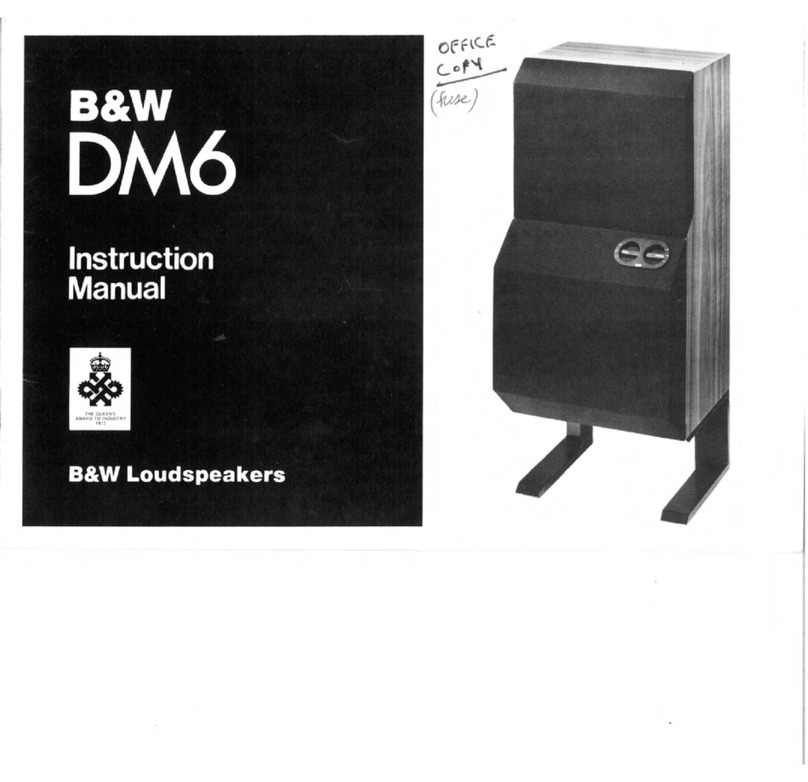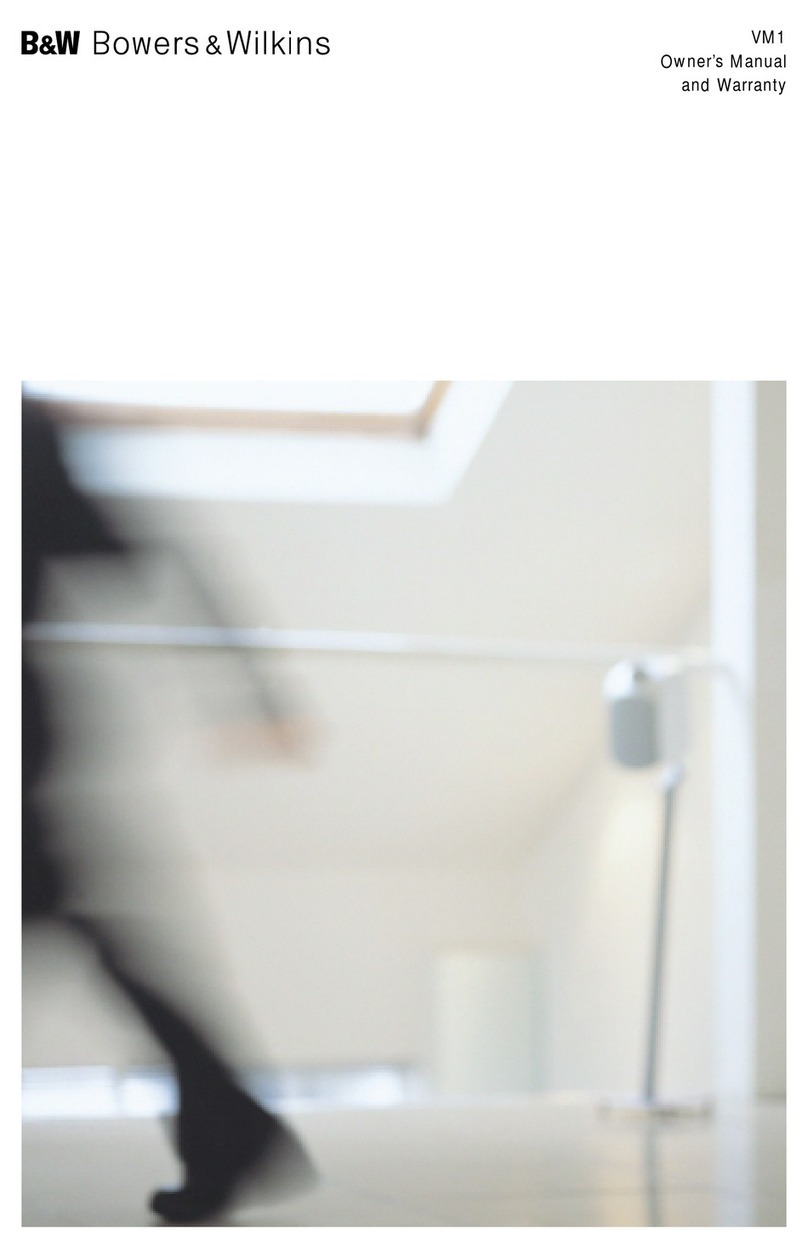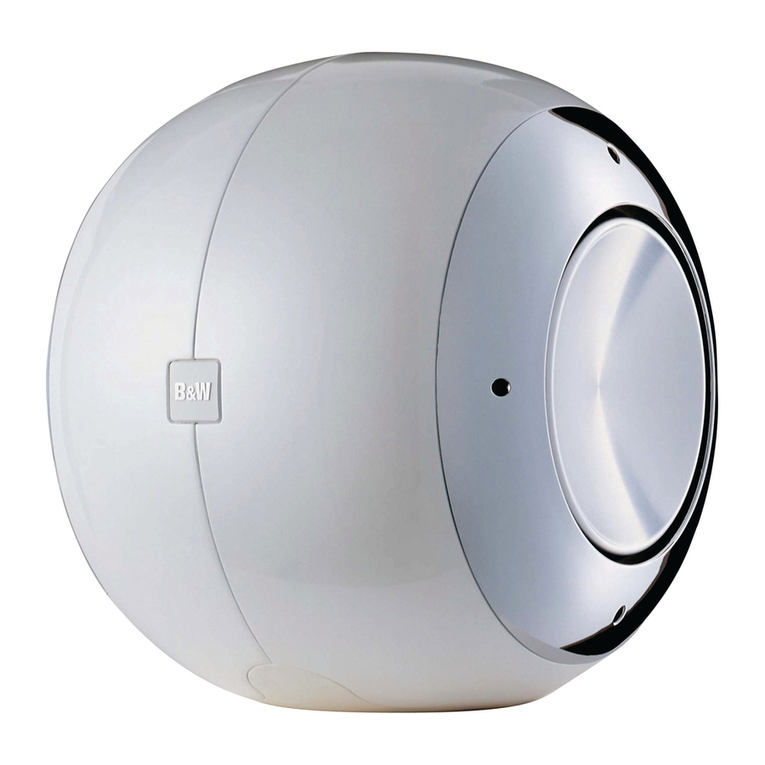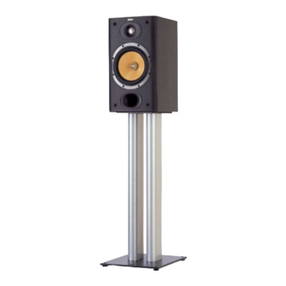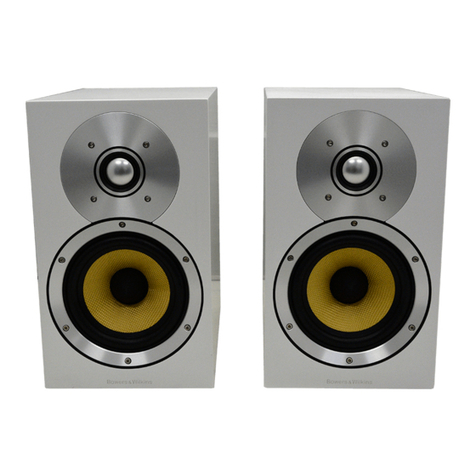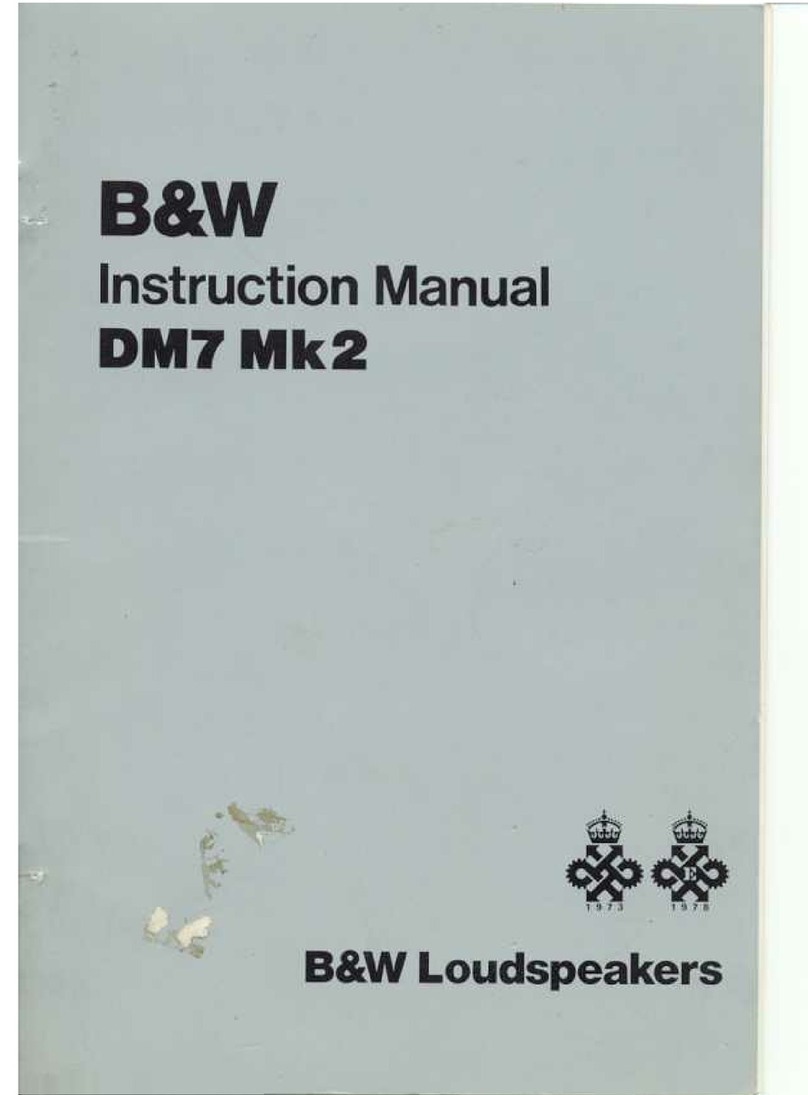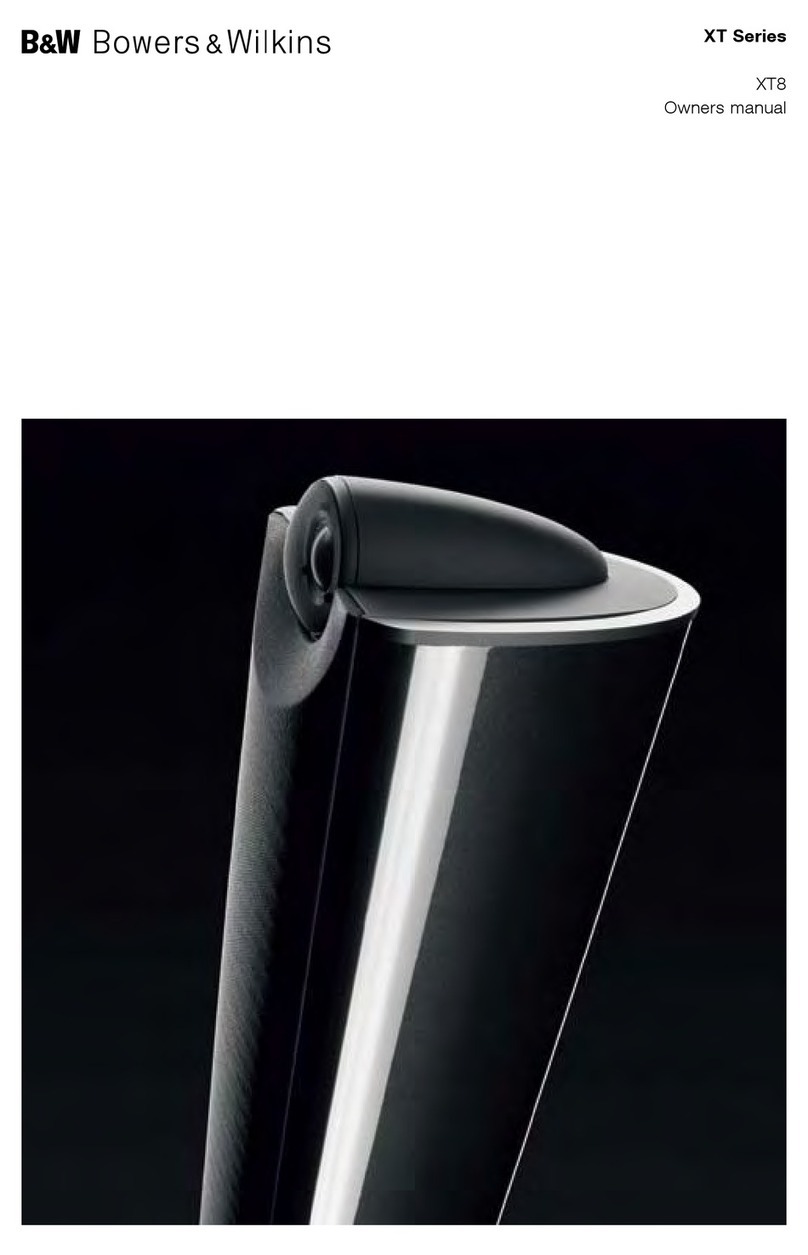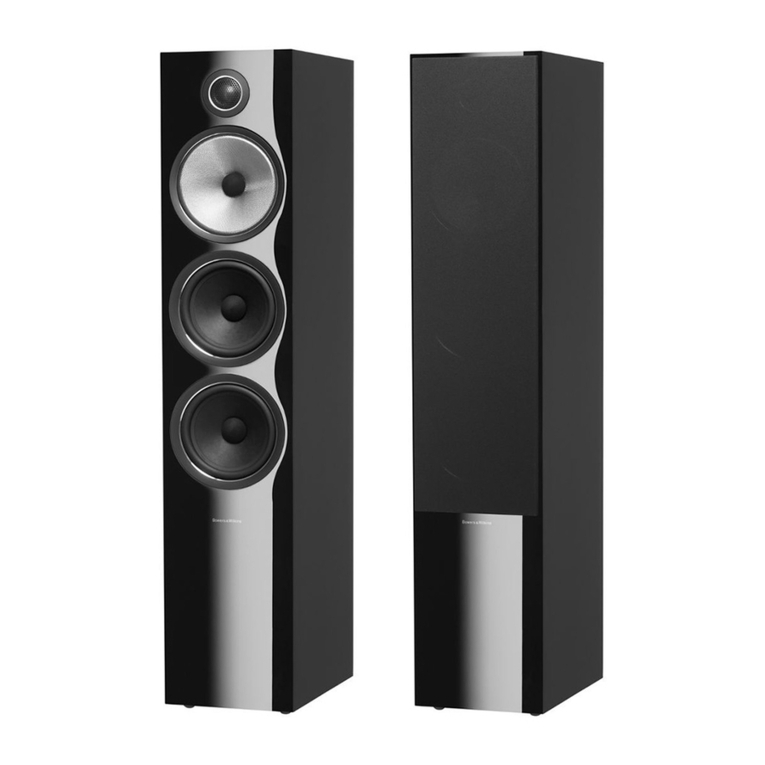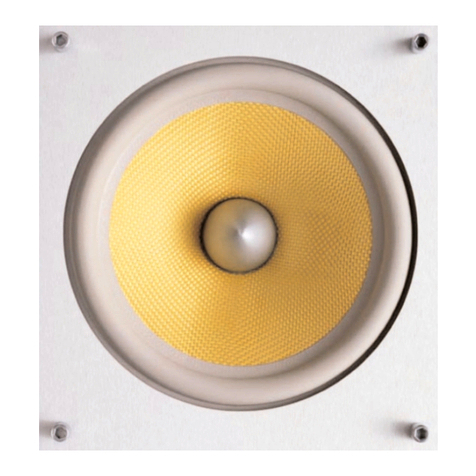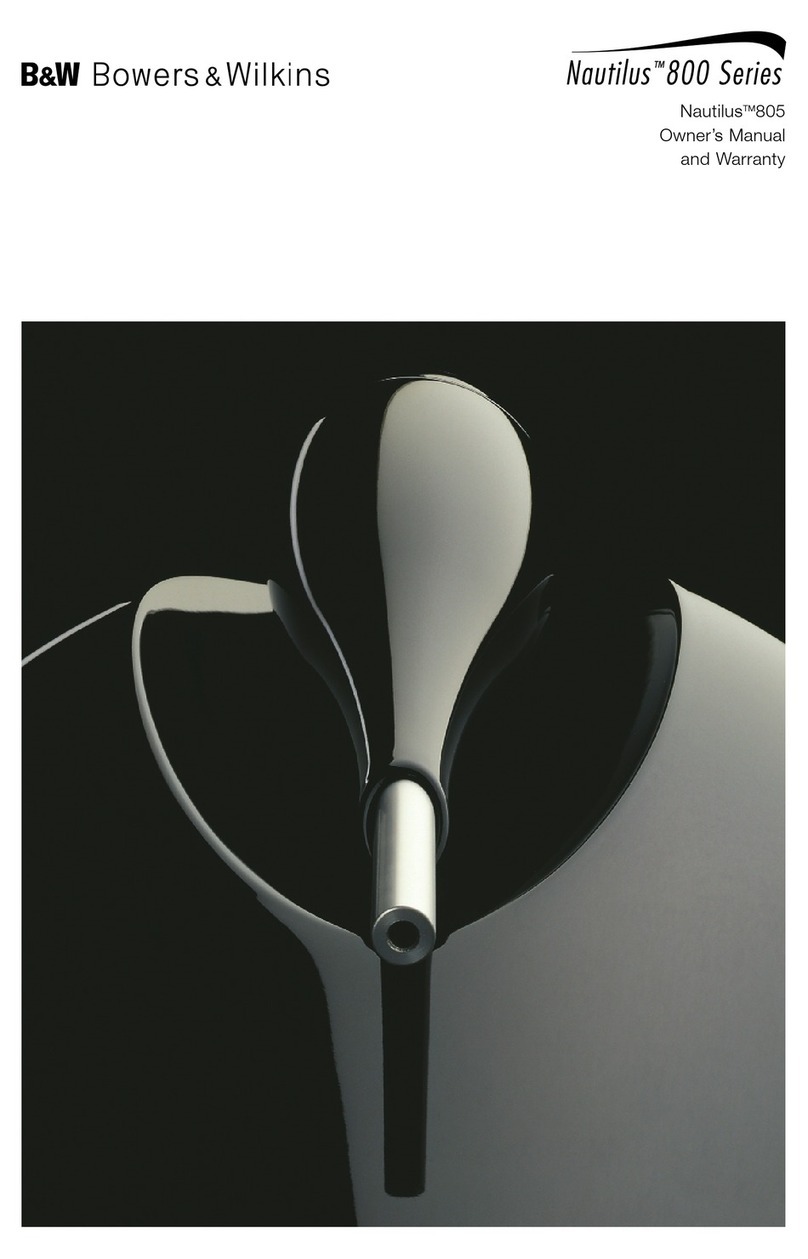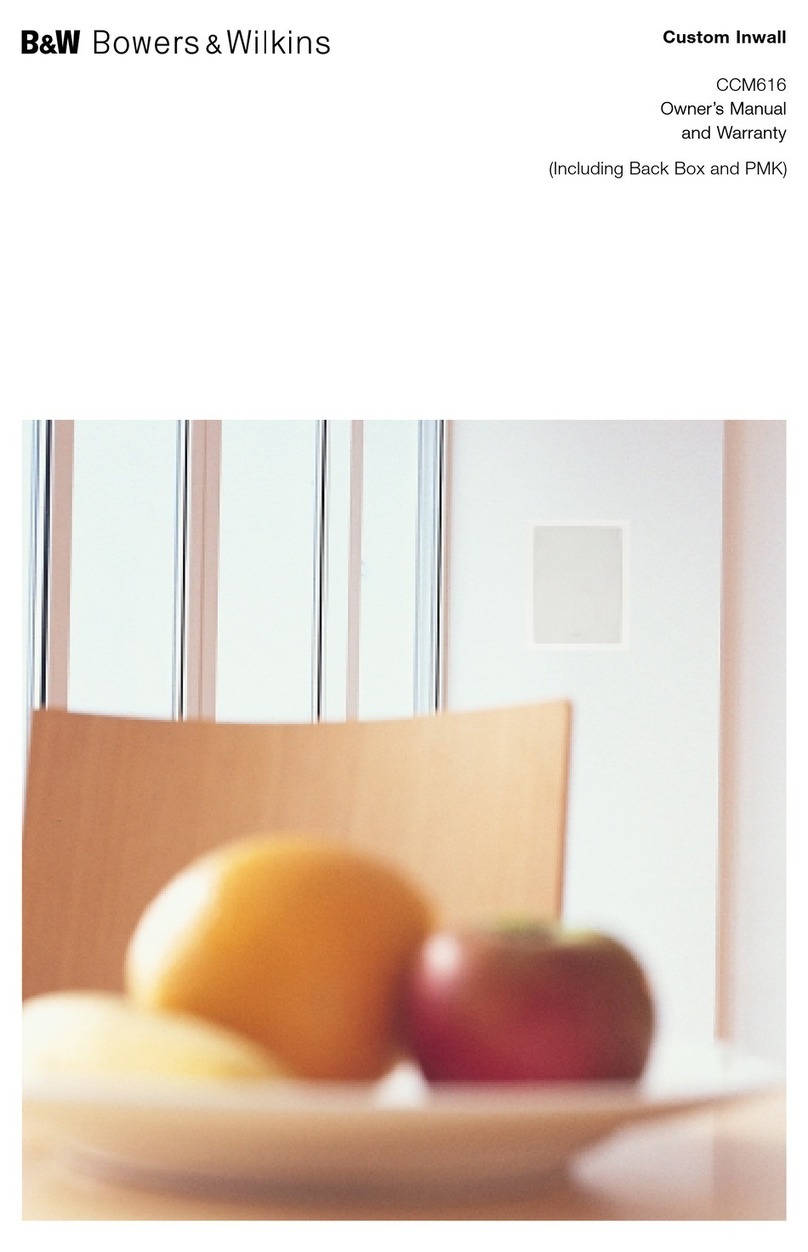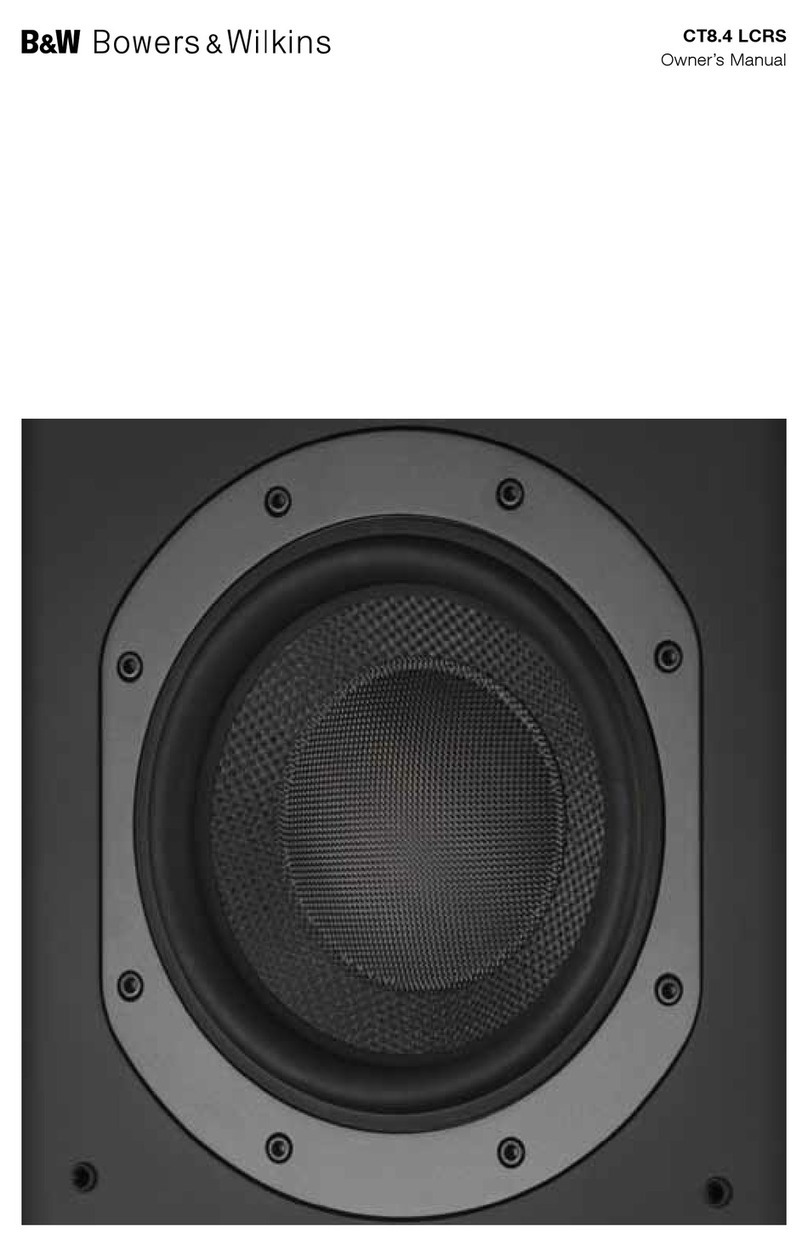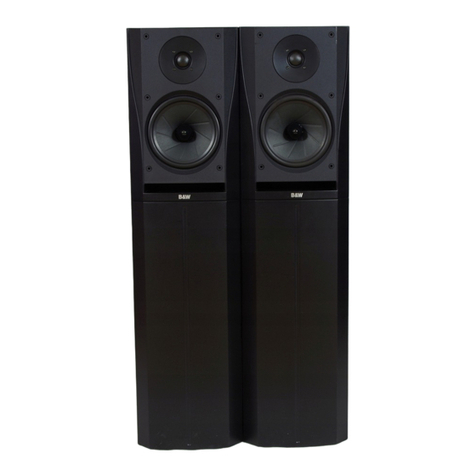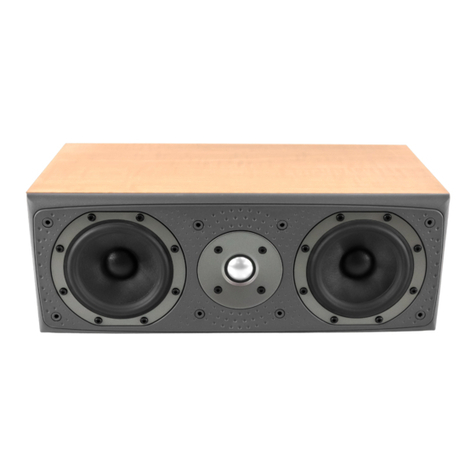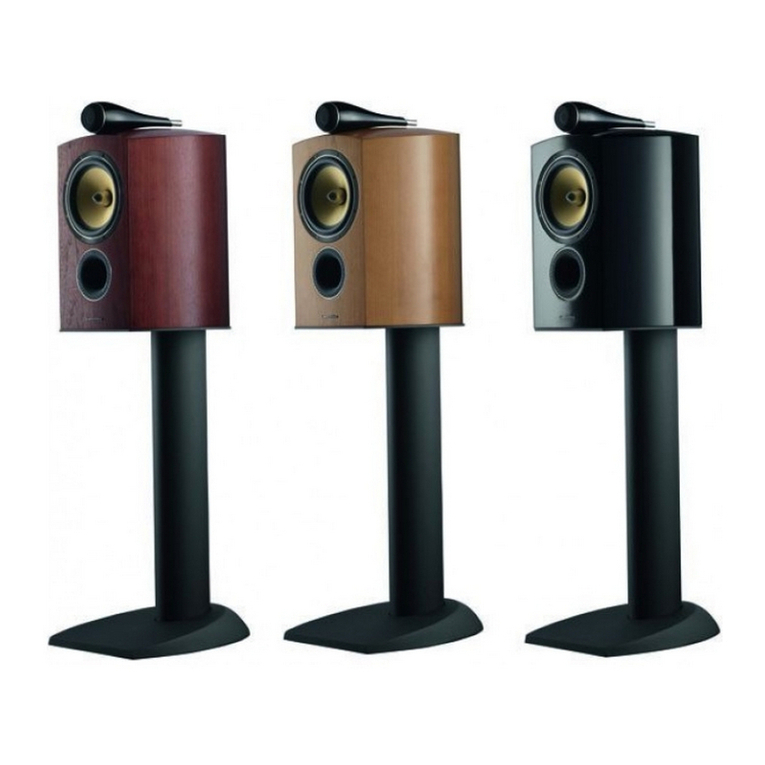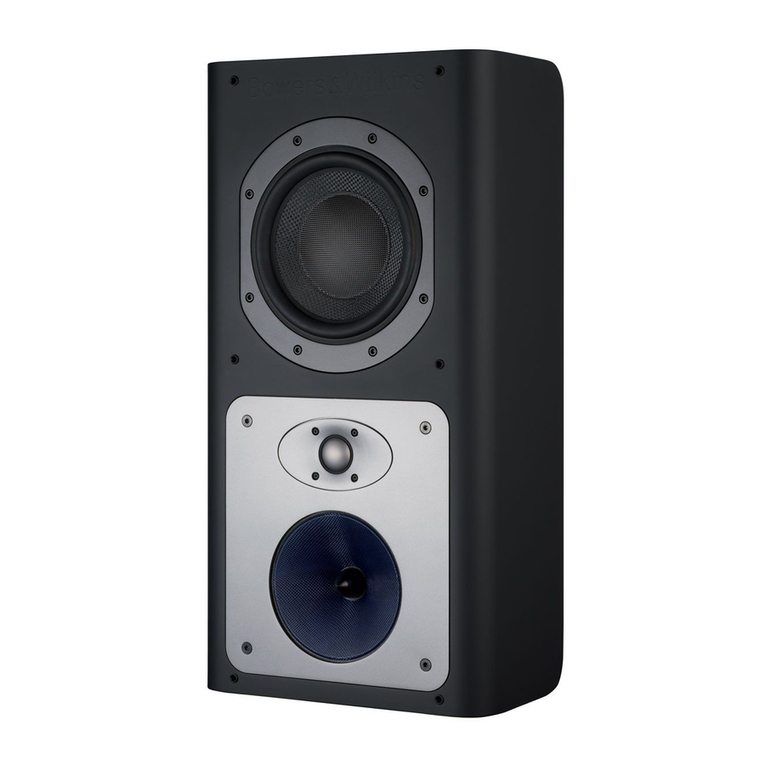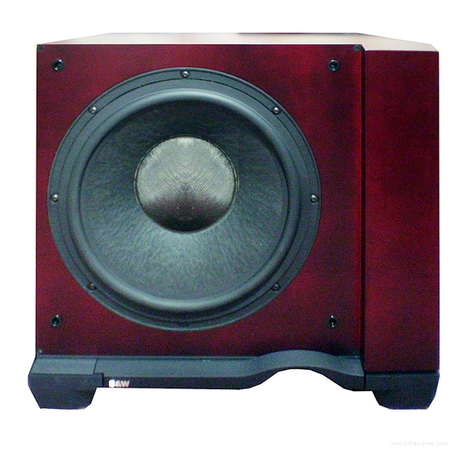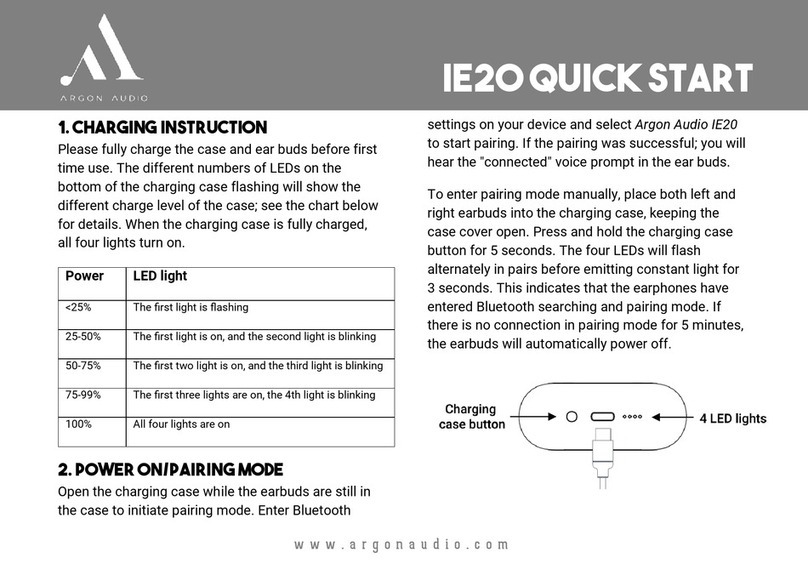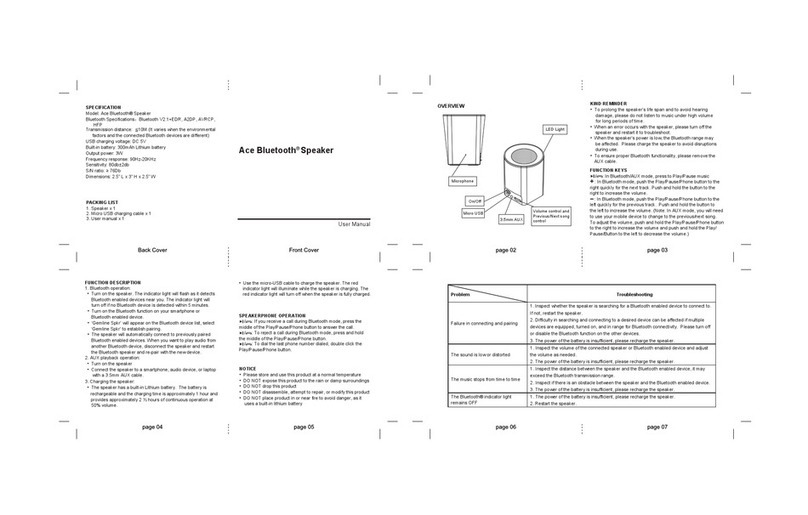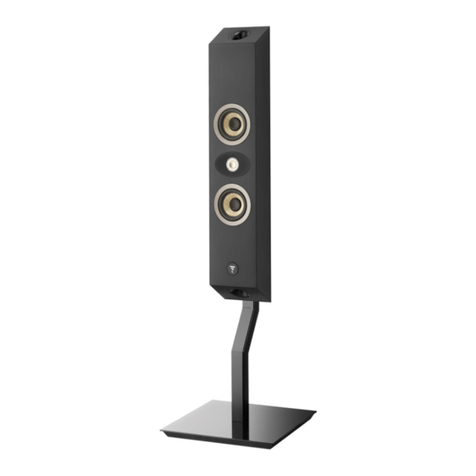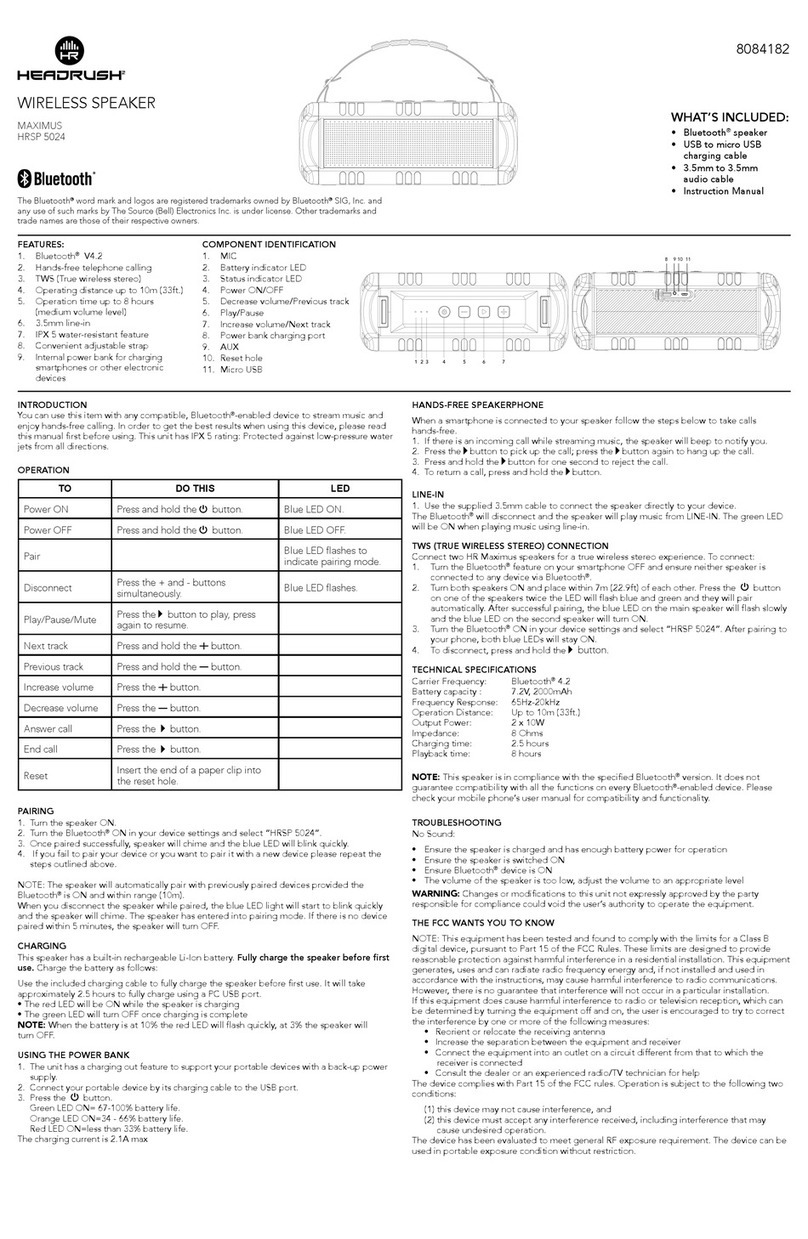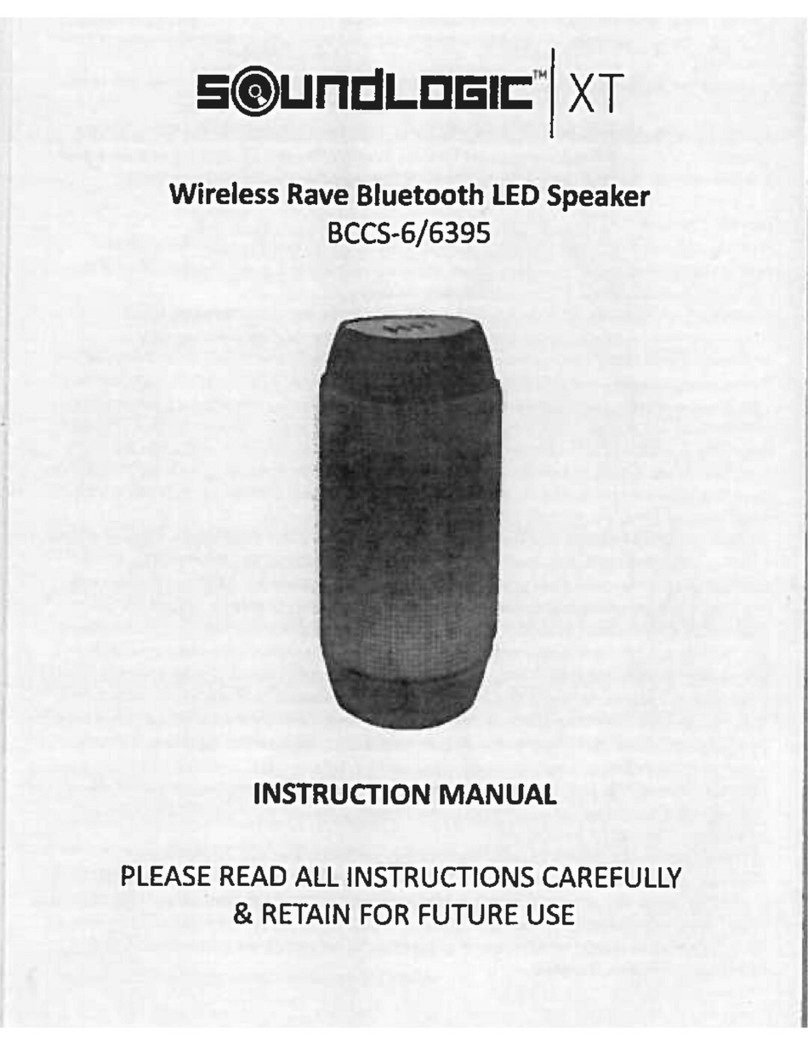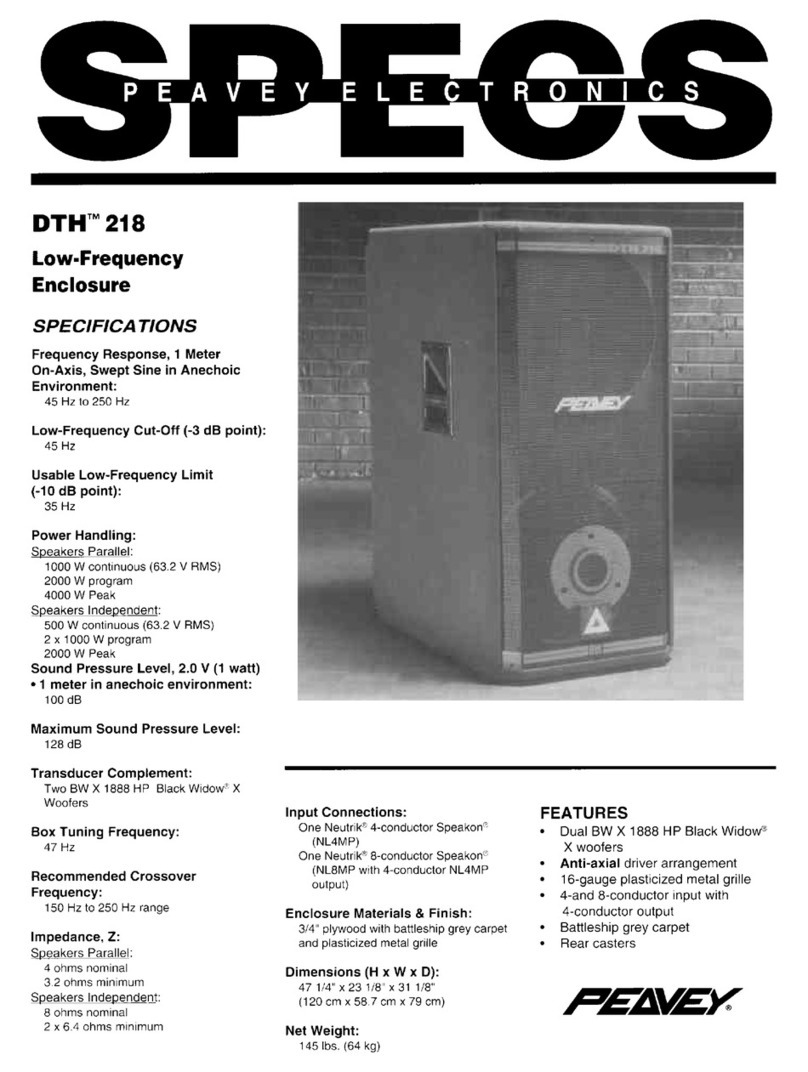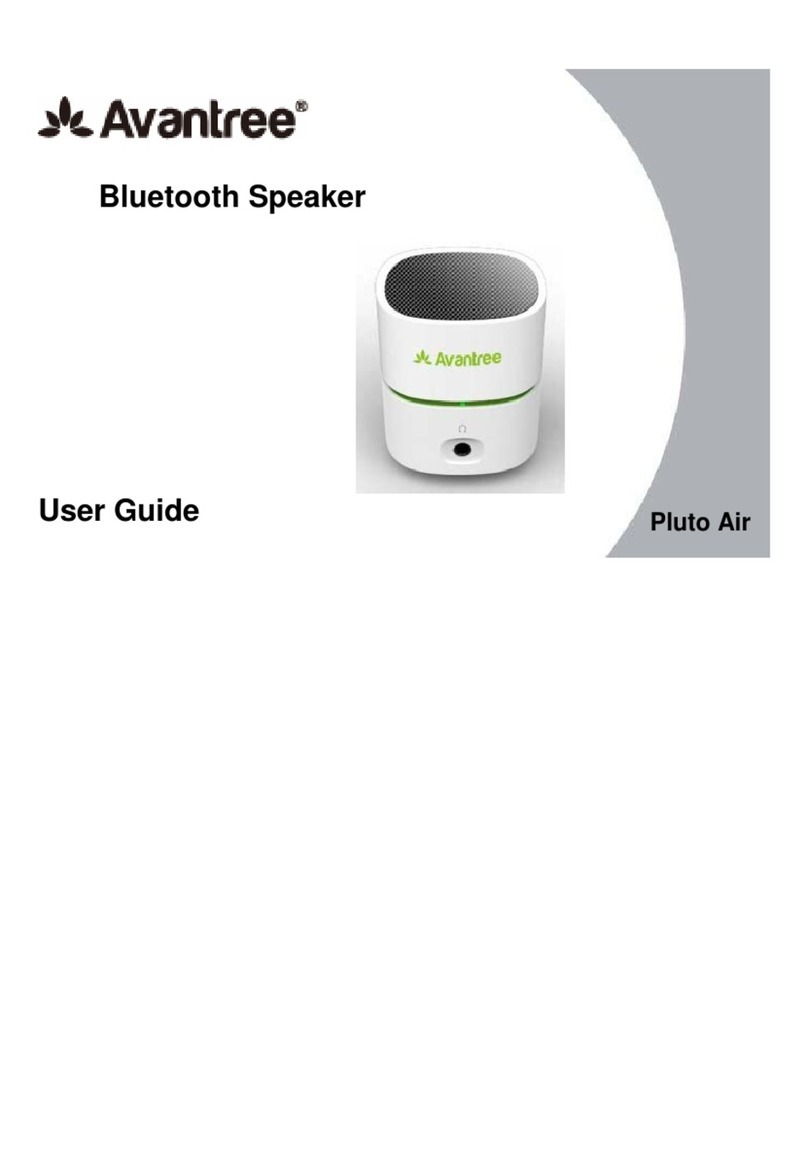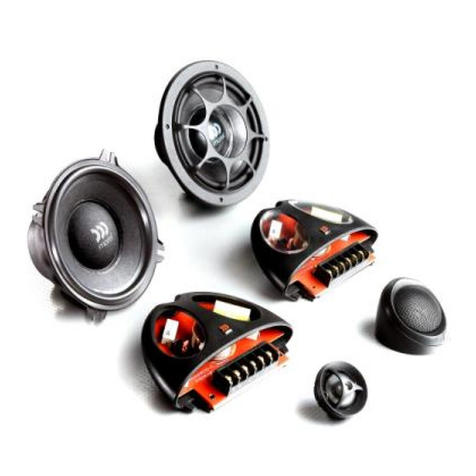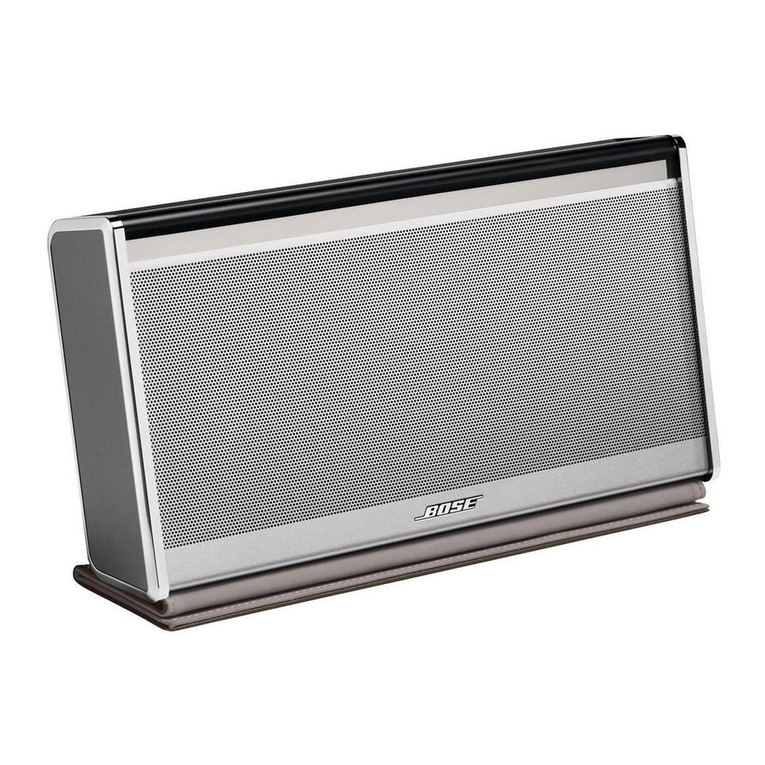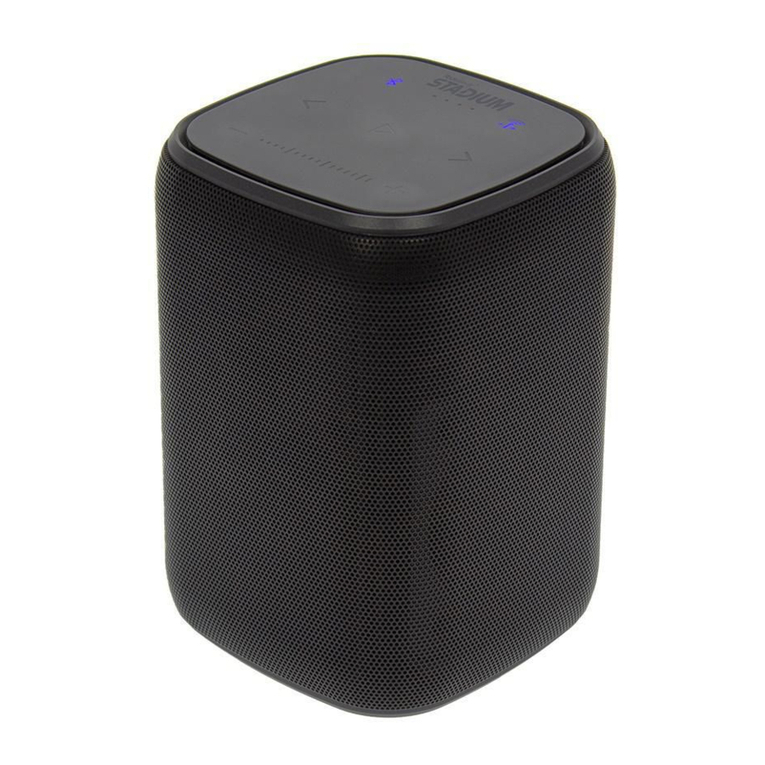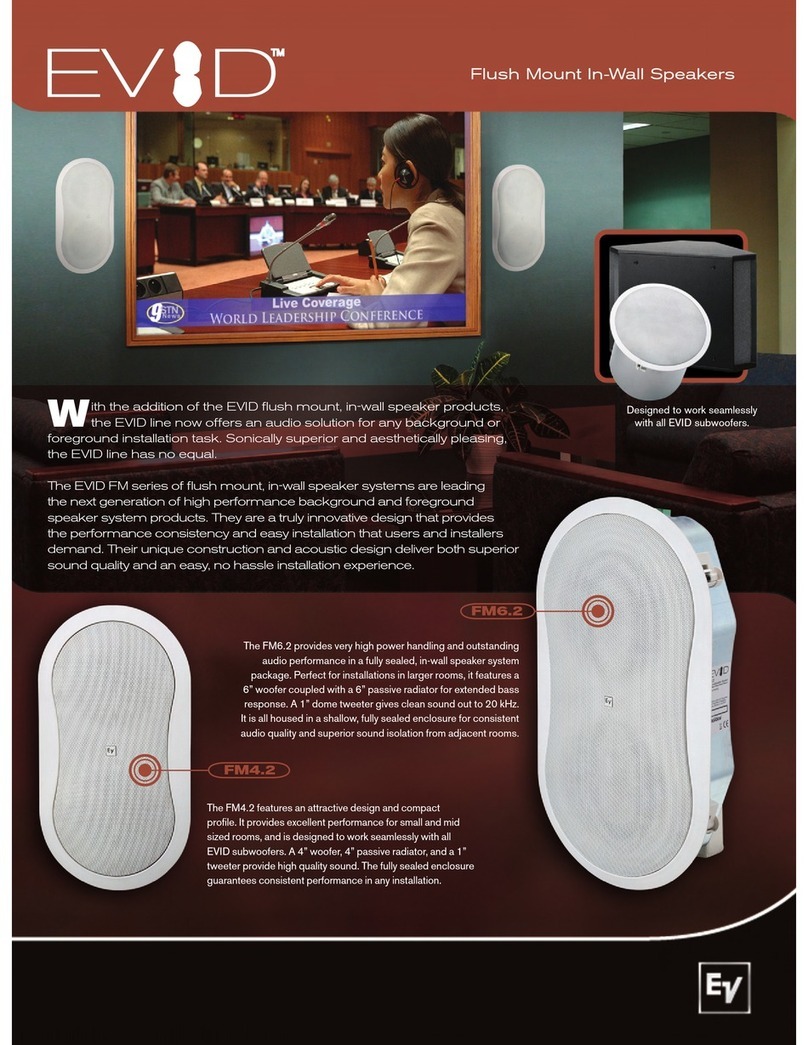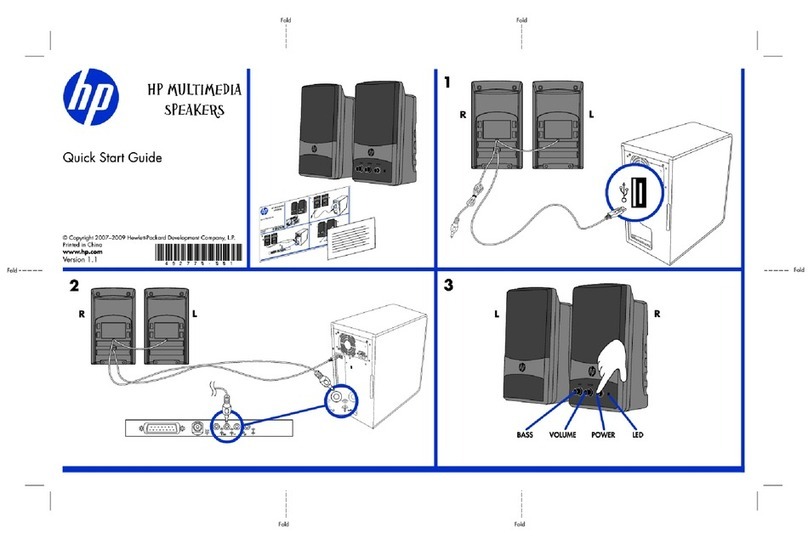Conventional Stereo Systems
To begin with, the speakers should be positioned
between 1.5m and 3m apart at two corners of an
equilateral triangle completed by the listening area at
the third corner. The speakers should be
approximately 0.5m away from the back wall, and at
least 0.5m away from any side walls. Figure 1a
illustrates this arrangement.
Home Theatre Systems
If the speakers are to be used for the front channels in
a home theatre system they should be placed closer
together than for 2-channel audio because the
surround channels tend to widen the image.
Positioning the speakers within approximately 0.5m of
the sides of the screen will also help keep the sound
image in scale with the visual image. The speakers’
height should be somewhere between the centre of
the screen and the height of the centre speaker. As
with conventional stereo positioning, the speakers
should ideally be approximately 0.5m away from the
back wall, and at least 0.5m away from any side walls.
If the speakers are to be used for the surround
channels in a home theatre system, position them as
illustrated in Figures 1c to 1e according to the number
of channels. To achieve even coverage over an
extended listening area it is beneficial to raise the
speakers above ear height.
Stray Magnetic Fields
The speaker drive units create stray magnetic fields
that extend beyond the boundaries of the cabinet. We
recommend you keep magnetically sensitive articles
(television and computer screens, computer discs,
audio and video tapes, swipe cards and the like) at
least 0.5m from the speaker.
Connections
All connections should be made with the equipment
switched off.
There are 2 linked pairs of terminals on the back of the
speaker. For conventional connection the terminal links
should remain in place (as delivered) and just one pair
of terminals connected to the amplifier. For bi-wire
connection the terminal links should be removed and
each pair of terminals connected to the amplifier
independently. Bi-wiring can improve the resolution of
low-frequency detail. Figures 2a and 2b illustrate
conventional and bi-wire connection.
Ensure that positive terminals on the speaker (marked
+ and coloured red) are connected to the positive
output terminal on the amplifier and that negative
terminals on the speaker (marked – and coloured
black) are connected to the negative output terminal
on the amplifier. Incorrect connection can result in
poor imaging and loss of bass.
Ask your dealer for advice when selecting speaker
cable. Keep its total impedance below the maximum
recommended in the speaker specification and use a
low inductance cable to avoid attenuation of high
frequencies.
Fine Tuning
Before fine tuning, make sure that all the connections
in the installation are correct and secure.
Moving the speakers further from the walls will
generally reduce the volume of bass. Space behind
the speakers will also help to create an aural
impression of depth. Conversely, moving the speakers
closer to the walls will increase the volume of bass. If
you want to reduce the volume of bass without
moving the speakers further from the wall, fit the foam
plugs in the port tubes as illustrated in Figure 3.
If the bass seems uneven with frequency this will most
probably be due to resonance modes in the listening
room. Even small changes in the position of the
speakers or the listening position can have a profound
effect on how these resonances affect the sound. Try
moving the listening position or locating the speakers
along a different wall. The presence and position of
large pieces of furniture can also influence resonance
modes.
If the central image lacks focus, try moving the
speakers closer together or angling them inward so
that they point at a location just in front of the listening
position. Figure 1b illustrates speakers angled inwards.
If the sound is too bright, increasing the amount of
soft furnishing in the room (heavier curtains for
example) may help balance the sound. Conversely,
reducing the amount of soft furnishing may help
brighten a dull sound.
Some rooms suffer from “flutter echoes” – echoes that
“bounce” between parallel room boundaries. Flutter
echoes can colour the sound of the speakers in the
room. Test for flutter echoes by standing in the middle
of the room and clapping your hands. Flutter echoes
can be reduced by placing irregular shaped items or
non-reflective surfaces, bookshelves, rugs or pictures
for example, on one of the offending walls or floor.
Ensure that the speaker stands are upright and firm on
the floor. Use carpet piercing spikes if appropriate and
adjust them to take up any unevenness.
Running-in Period
The performance of the speaker will change subtly
during the initial listening period. If the speaker has
been stored in a cold environment, the damping
compounds and suspension materials of the drive
units will take some time to recover their correct
mechanical properties. The drive unit suspensions will
also loosen up during the first hours of use. The time
taken for the speaker to achieve its intended
performance will vary depending on previous storage
conditions and how it is used. As a guide, allow up to
a week for the temperature effects to stabilise and
15 hours of average use for the mechanical parts to
attain their intended design characteristics.
However, longer run-in periods (as long as a month)
have been reported and there is evidence to suggest
that this has little to do with the speaker changing and
more to do with the listener getting used to the new
sound. This is especially so with highly revealing
speakers such as these where there may be a
3
